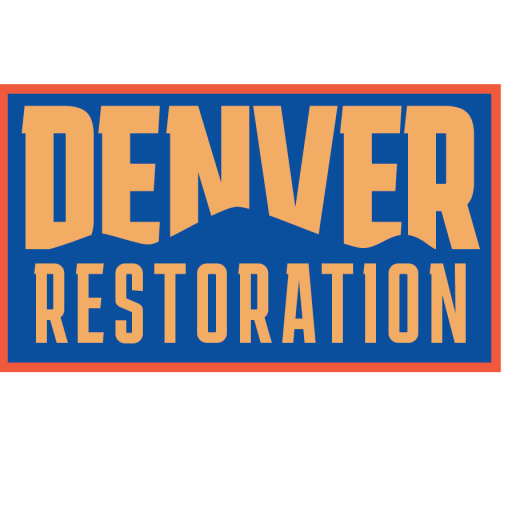An Unseen Enemy: Smoke Odor and the Struggles of Post-Fire Cleanup
For homeowners, property managers, and business owners, fire damage is a disheartening catastrophe. Not only does it damage property, but it also leaves a persistent, unpleasurable smoke odor that can be a constant reminder of the disaster. Various smoke odor removal techniques can provide relief, but understanding the intricacies of post-fire cleanup is essential.
Smoke Odor: The Invisible Threat
While initial fire damage is immediately visible, smoke odor is a more insidious issue. It infiltrates your space, clinging to walls, furniture, and clothes, leading to an overwhelming smell that can be disturbing. Smoke odor removal is a critical aspect of restoration, aiming to reestablish the freshness of your surroundings and make your space livable again.
The Nitty-Gritty of Smoke Odor Removal
Smoke odor removal is not a straightforward task. It requires a detailed process involving specialized equipment and professional expertise. Tackling it single-handedly might lead to incomplete elimination and potential health risks. An effective approach includes:
- Assessing the damage
- Using air scrubbers and fogging equipment
- Ozone treatment for persistent odors
- Cleaning all surfaces
Preventing future incidents is also a crucial part of the restoration process.
Kickstart Your Restoration Plan
Restoration after a fire is not limited to physical repairs. It also involves addressing the less visible impacts, like wall discoloration, soot accumulation, and lingering smoke smell. Here’s where the real challenge lies.
Understand the Damage
Understanding the damage is the first step towards an effective restoration plan. This involves assessing the extent of the smoke penetration and the type of smoke damage. Armed with this information, professionals can devise the most effective strategy for smoke odor removal.
Explore Your Options
The market offers various methods and equipment for smoke odor removal. Determining the right solution can be a daunting task. Your best bet? Rely on professionals who have extensive experience in such matters and can provide insight into what will work for your specific situation.
Make Safety a Priority
While you might be eager to regain normalcy, rushing the restoration process could lead to safety risks. Both the Red Cross and CIRES emphatically stress the importance of taking health and environmental safety precautions during the post-fire cleanup process.
Engage with Insurance and Legal Procedures
Navigating through insurance claims and legal obligations can be overwhelming after a disaster. It’s crucial to know your rights and obligations to ensure a seamless recovery process.
Seek Professional Help
Smoke odor removal is a specialized job, best left to professionals. It’s not just about eliminating the smell but also ensuring that there are no potential health hazards lurking in your space. ServiceMaster Restore, a trusted authority in restoration, details how using specialized techniques and equipment can yield the best results.
Establish Healthy Communication with Stakeholders
Restoration is a multifaceted process, involving multiple stakeholders, including insurance companies, contractors, and property dwellers. Establishing effective communication can ensure a smooth restoration process and keep everyone in the loop about the progress.
Paving the Way to a Cleaner, Safer Environment
Restoring your space after a fire is not just about repairs and reconstruction. It’s more about regaining the comfort and security of your home or business premises. And the journey towards this goal commences with efficient smoke odor removal. With the right knowledge and professional help, you can ensure a thorough cleanup, leading to a healthier and safer environment.
Remember, in the wake of such incidents, your ultimate guide should be safety and prevention. The road to recovery might feel long and arduous, but with the right steps, you can overcome the aftermath of a fire and rebuild your space.
Dealing with Hidden Elements of Fire Damage
Similar to smoke, other invisible elements associated with firefighting, like water and chemicals, create a profuse toxic aftermath requiring urgent attention. Personal items with sentimental value, important documents, and hard-to-replace items can be affected, resulting in even more stress following the disaster.
Moreover, water used to extinguish fire can cause additional damage. Mold formation, for example, is a common issue following fire incidents – a problem needing attention as it may cause severe health impacts if left untreated. Following the appropriate measures, you can help maintain the health of your indoor environment.
Remember that fire damage reaches far beyond physical destruction. Emotional trauma and psychological disruption are significant considerations that often accompany these tragedies.
The Emotional Damage: Overcoming Post-Fire Trauma
People are often unprepared for the emotional aftermath of a fire incident. The sudden loss of possessions, the disruption of everyday life, and the urgent need to move or renovate can be hugely distressing. Emotional support through friends, family, and professionals can always help during these difficult times.
Assessment and Estimation: Cracking the Numbers
Before any restoration and cleanup efforts, a detailed property inspection is necessary to assess fire and smoke damage. This assessment involves determining how deep the fire, smoke, or heat penetrated your home’s structure, which helps estimate the extent of repairs and cleanup needed.
Once damage assessment is completed, a reliable estimate of the restoration cost can be gauged. This detailed estimate can help with your insurance claim, providing an outline for costs, tasks, and timeframes associated with restoring your property to its pre-fire condition.
Insurance claims can be difficult to navigate, especially amidst the emotional turmoil of a fire disaster. Regulation stipulations, policy clauses, and settlement procedures can be hard to grapple with. Yet, staying informed about your insurance policy, understanding the claims process, and quick communication with your insurance company can undoubtedly aid in smooth claim settlement.
Understanding the Restoration Process: Step by Step
After your property has been secured, damages assessed, and estimates prepared, the actual restoration process can begin. This process includes eliminating water, smoke and soot from all surfaces, cleaning and sanitizing affected items, and finally restoring areas to their pre-fire condition.
Smoke & Soot Removal: Equipment and Techniques
Smoke and soot can seep into various materials, causing discoloration, corrosion and persistent odors. Equipment like air scrubbers, thermal fogging machines, and ozone generators, combined with expert restoration techniques, ensures complete removal of these elements.
High-pressure washing, scrubbing, sandblasting, and other physical removal methods are used for deep cleaning tasks. You can learn more about removing smoke odors from everyday items here.
Soot removal involves a specific set of techniques which can be found here in this comprehensive guide.
Securing Your Belongings: The Packout Process
A major part of smoke odor removal is properly dealing with your belongings through a ‘packout process.’ This procedure involves securing, cataloguing, and removing contents from your property for specialized cleaning and restoration.
Restoration firms maintain detailed inventories of your items, facilitating their tracking, while also providing necessary documentation for those covered by insurance. Opting for a professional firm often means that you can rely on them for the safe return of your belongings as part of your restoration journey.
Post-Restoration Measures: Preventing Future Incidents
Prevention is always better than cure. Following the completion of your fire damage restoration, subsequent measures should be taken to prevent such disasters from reoccurring. Ensuring your electrical systems are well maintained, keeping areas around stoves and fireplaces clear of flammable materials, and regularly testing smoke alarms can all contribute to a drastically reduced fire risk.
Preventative Maintenance: Your Responsibility
Proactive maintenance of your property is also essential. Regular inspections of your property for issues like water damage, which if left unaddressed, can result in mold formation, can help keep your property safe. If you notice mold, be sure to take immediate action with a professional mold remover.
Crisis Management: Stay Prepared
Having an emergency evacuation plan in place and ensuring every household member knows about it is very beneficial. Understand the unique fire risks associated with your home and routinely practice evacuation drills can prepare everyone for the unexpected.
A Fresh Start: Looking Towards the Future
Fire incidents are challenging to overcome, but remember that every ending is a new beginning. The restoration process not only helps revive your property but also gives you the opportunity to reevaluate and enhance your safety measures.
Take this as an opportunity to learn and grow, knowing that out of adversity comes strength. Your experience can help you and others to better navigate any future incidents and ensure that your home becomes even safer than it was before.
Bringing life back to normal and making your home or business livable once again may seem like a daunting task in the wake of a fire. However, with the available tools and resources, help from professionals, and guidance, you will get back on your feet in no time. Keep your focus on safety and prevention, and you will find pushing past the challenges becomes a manageable task.
Remember, in dark times, the potential for a brighter future always exists.

